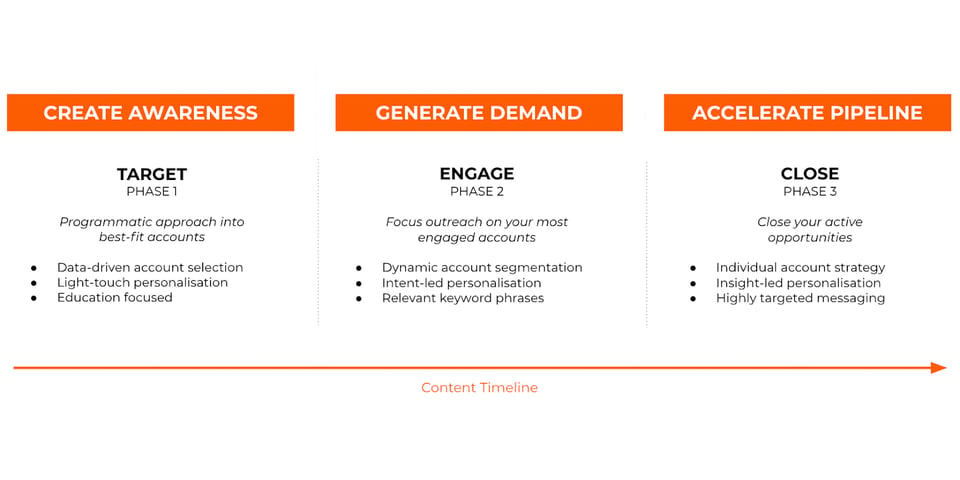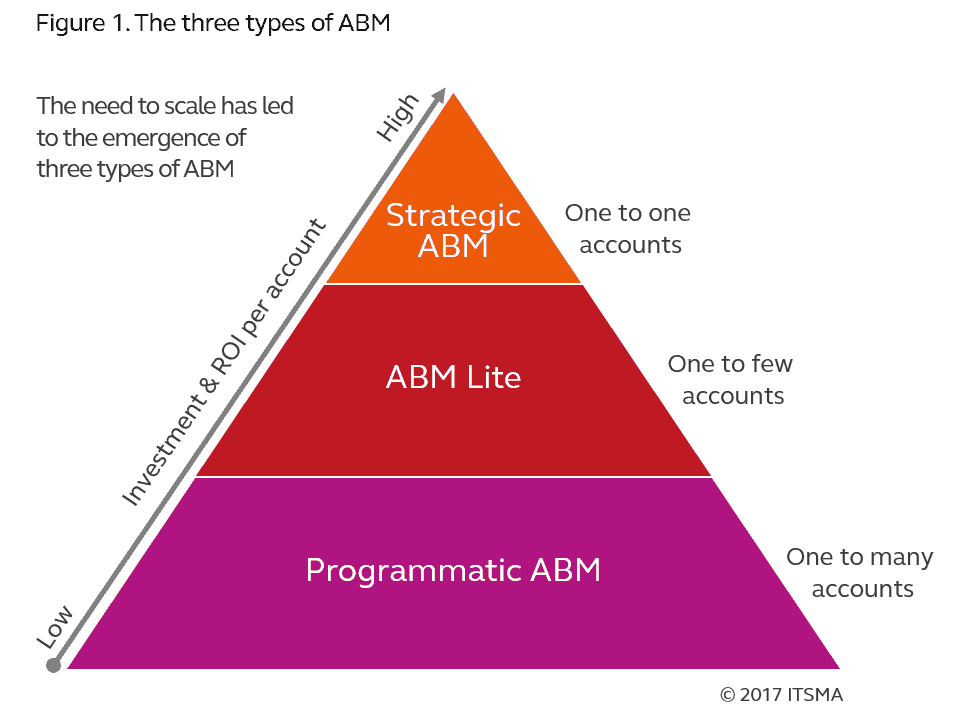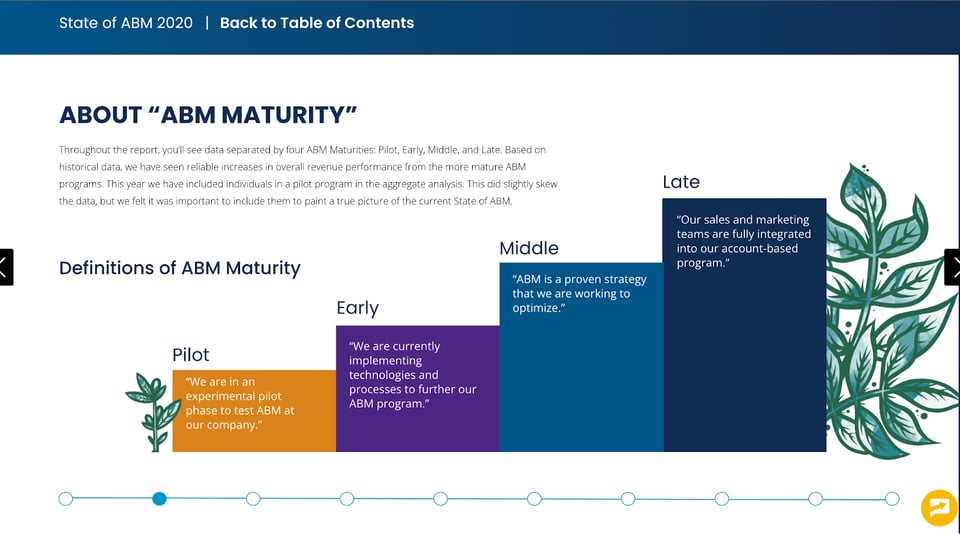
In case you missed it, B2B Marketing recently hosted their Global ABM Conference, and while there were a lot of interesting conversations surrounding all things B2B, one thing became pretty clear - everyone is talking about ABX. Account-based experience is a term that has been floating around in recent years, and I wanted to share thoughts on what it is, especially in reflection of the Global ABM Conference, and how I perceive it in relation to ABM and your marketing strategy.
In simple terms, ABX is creating an end-to-end experience for an account, on a one-to-one basis, that is synced across all platforms and marketing assets, aimed to target key stakeholders with the right messaging at the perfect time. “It requires accountability and ownership across the entire revenue funnel, from marketing to sales to retention.” Terminus
ABX is considered a development from ABM, with a shift that moves away from only creating content or a campaign via an ABM programme, and instead believes in launching an integrated strategy that combines everything, and I mean EVERYTHING, under one roof. It’s no longer just a sales and marketing campaign, instead, it looks at the client experience with your brand, across all touchpoints.
What Does It Mean to Be ‘experience’ Focused?
An account will contain varying key stakeholders, who each will have a different relationship with your brand - they might have never heard of you, or you might already be working with them. The experience comes into play when you alternate your messaging slightly towards different stakeholders, reflective of their relationship with you, and where they sit in your funnel. Typically, you will create differentiated awareness messaging for cold, but qualified, contacts, with a focus on education, and free informative pieces that may tackle issues they are currently undergoing. As the lead moves further down the funnel, the messaging shifts to become very specific and targeted, based on the insights and data you have gathered, containing keyword phrases you know will be relatable to this hot contact. 
But why is this important? Focusing your attention on the experience that a client has with your brand is fundamental because it is how your brand is perceived. It’s now harder to gain information and data on potential clients. People refuse to sign up for content anymore because, quite frankly, it’s become annoying. LinkedIn states “only 25% of B2B buyers say that they’re willing to share details to access interesting content. We’re preventing people engaging with our content even when they find the content engaging.” Giving your information out to a company that is going to pester you over email isn’t what anybody wants- it’s not a great experience.
For this reason, you can’t rely on inbound marketing alone. But mindlessly calling and emailing a contact that has no relationship with you will only serve to annoy them. This is where ABX is formed. You target a different message to different stakeholders, using relevant terms they will understand and relate to, providing information that is helpful to them. So, when the time comes around and you give them a call or drop them an email, it does not seem out of the blue and random, but instead helpful and targeted to their needs.
How is ABX Different to ABM?
I found there were a few clear differences between ABM and ABX when discussed at The Global ABM Conference. The biggest distinction was defining ABX as a business-led strategy, integrating multiple teams, that focuses on driving business outcomes by creating an experience around the target account. On the other hand, ABM was discussed as being just marketing and sales focused, targeting accounts based on their best fit, and is mostly campaign led.
ABX will only implement targeted messaging to a stakeholder from a highly strategic account with lots of opportunities, once they have shown a certain amount of interest. ABM, however, uses targeted messaging to best fit accounts, whether or not they have shown interest. Using the figure below as guidance, The consensus at the Global ABM Conference largely viewed ABX sitting at the top of the pyramid and ABM at the bottom.

This means where ABM focuses efforts on business priority accounts that are best fit for their product, ABX is led by the account priorities and tailors messaging towards their needs. ABM is built on quantitative data, but ABX incorporates qualitative and quantitative data. Including quantitative data into an ABX strategy means gaining data and insights that will allow you to personalise the experience to another level, one example of this is by tailoring the targeted messaging to each stakeholder, referencing insights and issues that are directly about them.
ABX was preached as having more than just sales and marketing alignment but includes a whole team of experts across the board to bring the experience to life. It requires a leadership team of sales, marketing, operations and customer success, and each individual team plays their specific role in the account-based experience.
Customer success provides the characteristics of key accounts and why they are successful within your business. Marketing and strategy will then define your buyer personas and work in conjunction with sales to create a target account list. Operations need to keep the team up to date with data and alerts when the target audience visits your website, and lead regular insight sessions to review your heat maps and study what job titles are responding well.
What’s the Verdict?
There is no denying the importance that the customer experience plays within ABM, but my honest thought is ABX is just another term for running a fully integrated ABM programme.

ABM can be campaign focused, and often starts off that way for companies that are new to Account-Based Marketing. However, when properly executed, ABM is not a quick win, it is something that is fully integrated into your company and requires full team alignment. Therefore, companies that are considered ‘mature’ in ABM, as Terminus defines it, are those that have fully aligned teams.
My belief is that ABM executed at its highest level on a specific one to one basis is ABX. But, understandably, ABX or Mature ABM is not feasible or easy to implement straight away, it takes time, learning, experience and expertise. For this reason, I believe it is easier to view ABM as a path that you progress along, eventually achieving maturity.
That said, the advice given across the board at The Global ABM Conference on implementing a successful ABX programme is solid. To build a unified program means creating an aligned leadership team across marketing, sales AND operations and customer success. Having input from all four teams will give you the strongest insights possible for targeting your ideal clients. Spend time with this leadership team looking at what previous clients were successful, and who would be ideal to spend time investing your ABX / mature ABM programme on, as well as looking at who isn’t worth this level of personalisation because there isn’t a strong enough opportunity there.
Interested in running your own ABX strategy, or thinking about introducing an ABM campaign to your marketing? Drop us an email at adam.clarke@punchabm.com




